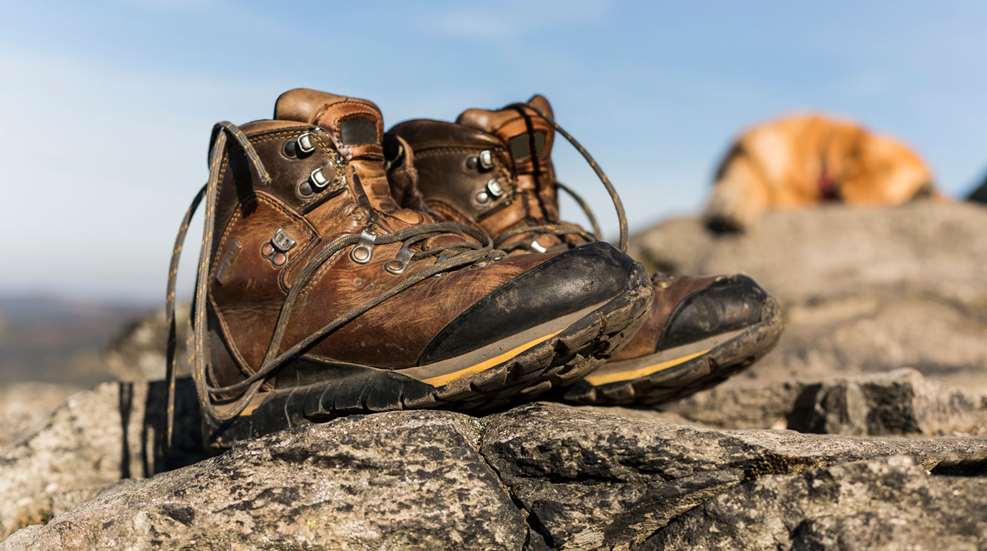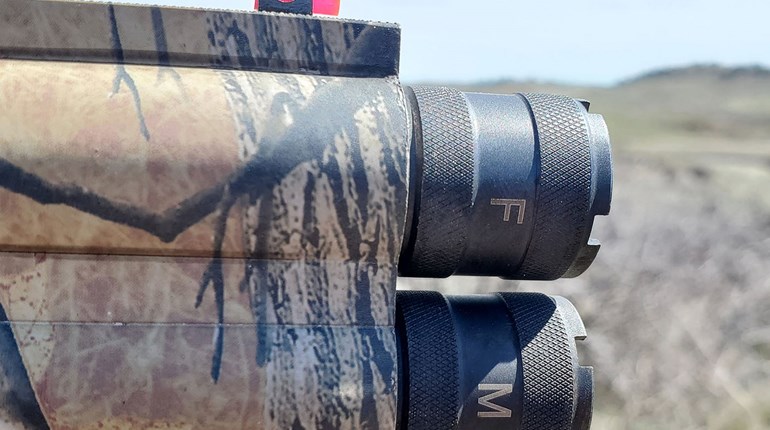
New boots come out of the box stiff—some stiffer than others, depending on the boot type, but all boots will go through a break-in period before they hit their peak of comfort. What’s actually happening is that while your feet are breaking in the boots, the boots (and socks) are breaking in your feet as well. Blisters and hotspots are part of the process, because your feet and the boots are getting used to each other and finding their perfect sweet spot. Keep that in mind as you go through the break-in process.
Also keep in mind that this process takes time and miles. Taking a brand-new pair of boots on a 10-mile hike or on a week-long hunting trip in the mountains is a sure recipe for misery, because again, blisters and hotspots are almost certainly going to happen. You want them to happen at home, where you can treat them and change footwear—not on the side of a mountain where every step becomes agonizingly painful and you have no other options. All that said, plan on starting the break-in process at least a couple of months before your big hunt or hike. A good rule of thumb is that you need about 50 miles on the boots before they get good and comfortable.
Breaking Them In
You want to start slowly, wearing the boots for an hour or two around your house or office each day for a few days. Don’t wear them outside yet, because you want to keep them in clean, returnable condition in case the initial wear lets you know that this pair just isn’t going to work out. Whenever you wear the boots, wear them with the same socks you plan to wear when hunting or hiking—socks are part of the system, so don’t throw a wrench into the works by changing from a thick wool hunting sock to a cotton tube sock and back. Start with a couple of hours the first day, a few more hours the second day, and so on.
At every point in this process, you need to address blisters and hotspots as soon as you notice them. I like Leukotape for this purpose, but moleskin and adhesive blister bandages also work. Treat your feet immediately, and limit your time in the boots until the blisters fade. You can also try changing the way the boots are laced, even skipping an eyelet here or there if it’s creating a hotspot.
After a week of this, start walking around the block and around town in them. You’re not hiking on rugged terrain yet; you’re just going outside on relatively smooth surfaces, and upping the amount of time you spend each day in the boots. Walk the dog, check the mail, run errands, heck, wear them on the treadmill if you want. Do this for a week or two or until you’ve found all the new blister spots this stage creates. By the time you’re good to go here, you’ve probably got 10 miles or so on these boots, and it’s time to hit the trail.
Go on some (small at first) for-real hikes over less-than-smooth terrain. This is the time to simulate the conditions you’ll be hunting in, so you want to hike uphill, downhill, on the sides of hills, through puddles and streams, and everything else you can think of that you might encounter in your hunting adventures. Do a couple of miles at first, then more the next time, then more the next time, and don’t forget to address any blisters as soon as you notice them.
On these hikes, start thinking about how you move when you’re hunting—there’s often a period of hiking followed by a period of sitting still for shooting, glassing or just resting. The sitting part is where your feet might start to swell, and you’ll also notice new pinched spots depending on the position you sit in. Start incorporating breaks/sits into your hikes as they get longer and longer, and see if new trouble spots develop.
After you’ve put on around 20 miles in this stage of longer and longer hikes, start adding weight. How heavy is the pack you typically hike or hunt with? Begin wearing that weight on your back during these hikes—it’ll help condition your body as well as your feet and your boots. Carrying weight can change your stride and the placement of your footfalls, especially on hills, so don’t skip this step. Once again, hike in increasing increments here until you’ve put another 20 or 30 miles in during this stage.
By now, your boots, socks and feet have gotten used to each other enough that the boots should be considerably more comfortable than they were when you started. The boots are broken-in and ready for adventure. If you’re still getting blisters (which is always possible, especially in wet or sweaty conditions), continue to treat them with Leukotape or moleskin, and consider swapping out for a fresh pair of socks partway through each day. Damp socks, even if they’re just damp from sweat, create excess friction, and friction is what causes blisters.
What Not to Do
You will read all sorts of break-in shortcuts on the internet, and most of them are old wives’ tales. Your feet and your boots need a certain amount of time and miles together before they settle into a comfortable rhythm, and there’s no substitute for that.
Although getting the boots wet by crossing streams and puddles, or even hiking in the rain, does help break them in under real-world conditions, do not listen to the often-quoted advice that you should soak your boots in the bathtub and then wear them around the house until they’re dry. First of all, that will be completely miserable, and second of all, many boot manufacturers indicate that this is bad for the boot, particularly the leather parts.
Leather dries out and must be conditioned periodically to keep it pliable and prevent cracking. Condition your boots with a good boot-care product (see if the boot manufacturer has a recommendation) at least at the end of every hunting season or whenever they seem drier than they should be. Letting the boots get soaked and then dried will suck moisture from them that’s hard to replace with an external conditioning. Yeah, it happens sometimes on tough hunts and hikes, but don’t do it on purpose. It shortens the life of your boots. If you’re going to invest the time and miles into getting boots well-broken-in, you want them to last as long as possible.
Heat does the same thing—dries the boots out excessively. If you hear advice to warm boots up to apply conditioner, sit them by the fire to dry out overnight, or other forms of heating boots up, ignore it. Heat is generally not good for boots.
To sum it all up: All boots need broken in, and some require more time than others based on how they fit your feet and how they’re constructed, but to be safe, plan on putting 50 miles on the boots in a controlled setting before you take them on a big hunt. Start slow and easy, and gradually increase the time and the intensity. And don’t look for shortcuts!














































